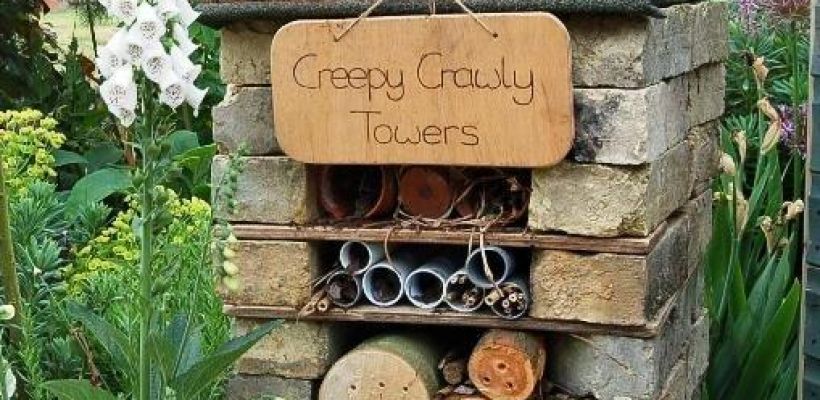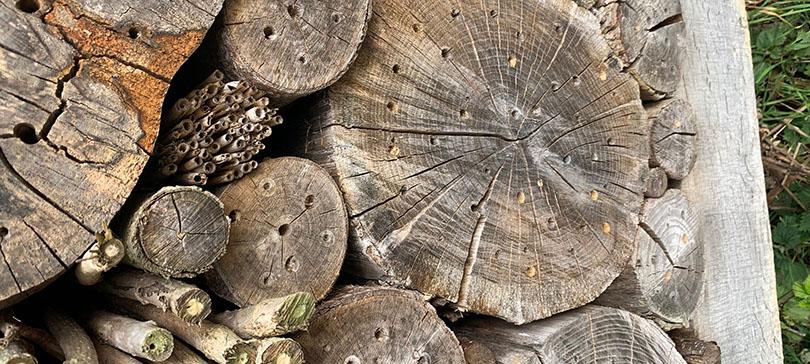Zelf een insectenhotel maken
Gebruik voor je eigen variant bamboe, holle takken en riet in verschillende diktes. Steek ze ergens in of klem ze tussen bijvoorbeeld boomstammetjes. Zorg dat de achterkant van de stengels dicht is of ergens tegenaan staat (je kunt ze bijvoorbeeld in een leeg blik stoppen).
In de boomstammetjes boor je gaten van verschillende diktes tussen de 2 en 9 mm. Boor niet door en door maar tot de lengte van je boortje. Gebruik bijvoorbeeld een stuk massief eiken- of beukenhout. Esdoorn kan ook. Het hout moet hard zijn, anders worden de gaten te 'rafelig' en gaan de vleugels van de insecten kapot. Verder kun je er dennenappels tussen doen, leem, stro en allerlei plantenresten.
Hang of zet je hotel op een zonnig, liefst droog plekje. Solitaire bijen, metselbijen, gaasvliegen en sluipwespen zullen je dankbaar zijn. Maar je kunt ook kevers en spinnen verwachten.
De handleiding voor het insectenhotel Creepy Crawly Towers op de foto helemaal bovenaan:
1. Cut a sheet of marine grade plywood to make a series of 45cm squared 'floors' for the stack or, if you don't have access to marine plywood, use treated softwood
2. Wrap the top section in some roofing felt and secure with tacks on the underside – this will keep the stack dry
3. Cut two 45cm lengths and two 39cm lengths of 2.5cm lathes – secure these with screws to the outer edges of the felt-covered roof (these will retain the soil and compost for the green roof whilst the 0.5cm gaps will help excess water to drain away)
4. Choose a quiet site in the sun or part shade and then on a flat piece of earth build the side walls with one or two layers of bricks. Place a 'floor' over the top and continue to use bricks and floors to make your tower.
5. Place the roof on top and use slips of slate or tile beneath one side to angle it slightly and aid drainage. Then fill with a mixture of earth, compost and grit before planting with drought-tolerant species – we used sempervivums (houseleeks) – and watering in.
6. Use various materials to fill the gaps in the layers – ours includes leftover pipe lengths and poster tubes (some filled with drinking straws and bamboo canes), logs (with drilled holes for extra habitats), old plant pots, stones, pine cones, twigs, dried leaves and roof tiles. 7. Secure an extra screw on the front of the roof section to hang your sign – we made ours with a piece of marine ply and twine and I used a soldering iron to write the name.The best thing about the stack is that there are no set rules – you can try using practically anything to make an insect shelter – and it's incredibly easy for children of all ages to help fill the layers. (Uit: Groei & Bloei oktober 2012, van Garden designer and blogger Dawn Isaac)
Kijk ook op de site van The Guardian/Gardening



